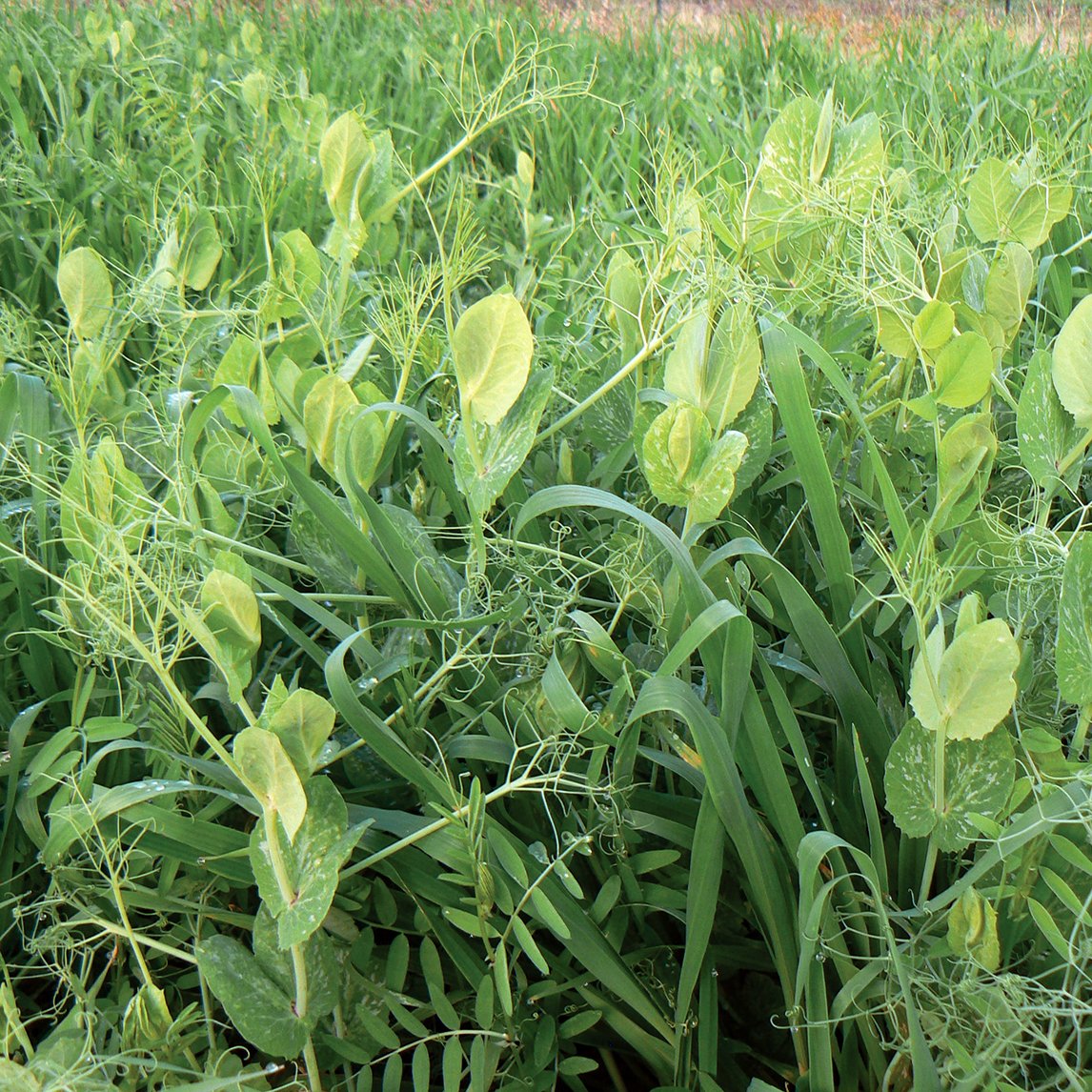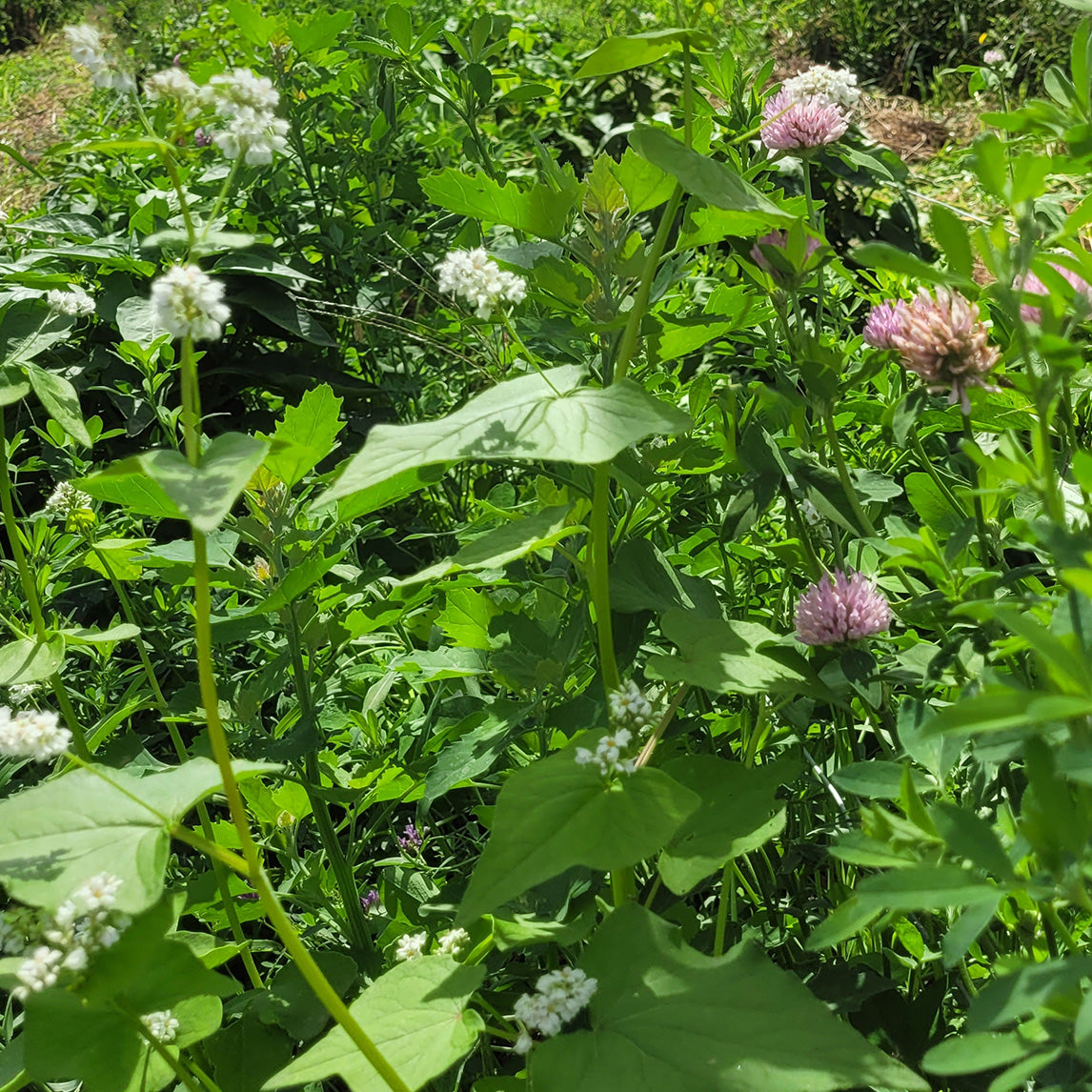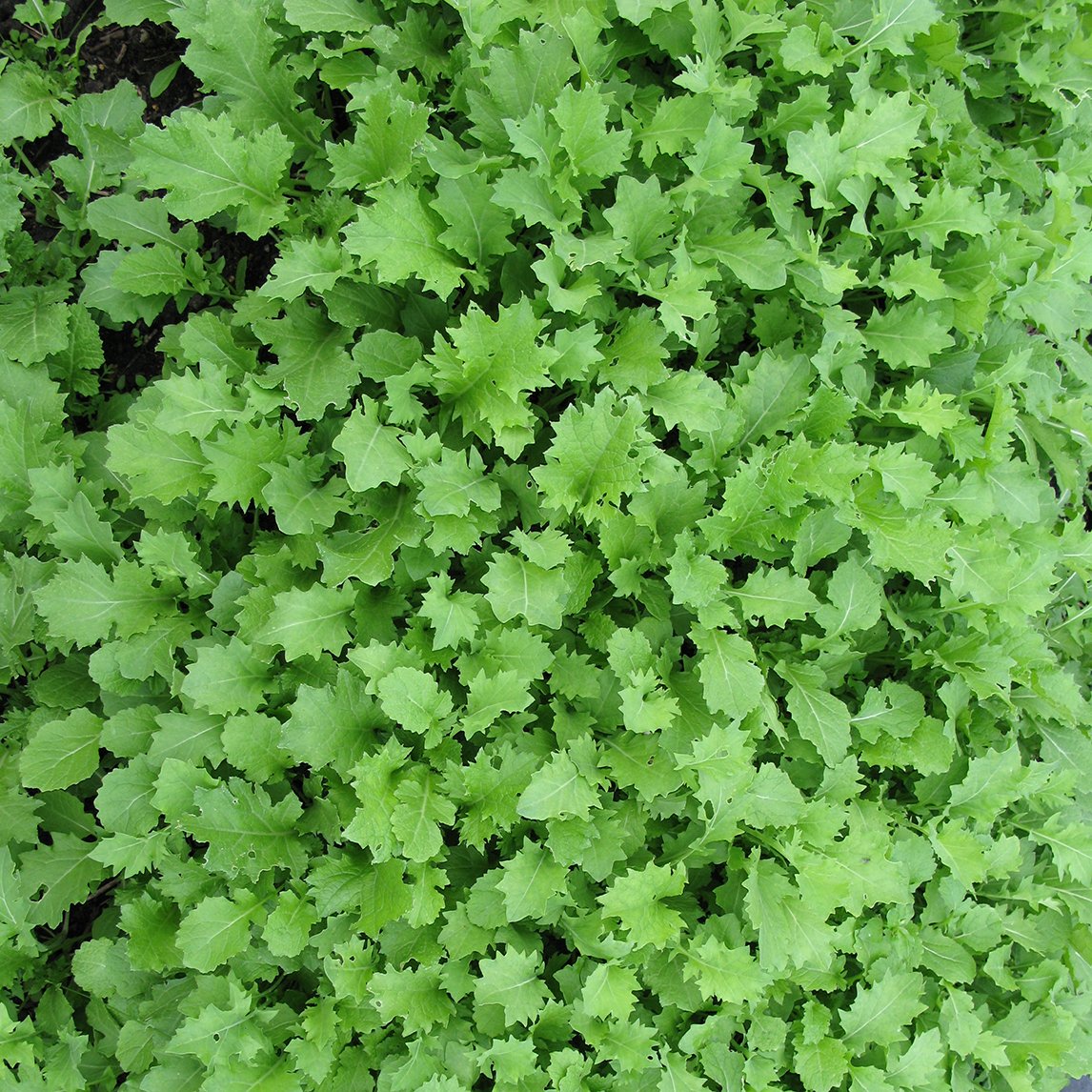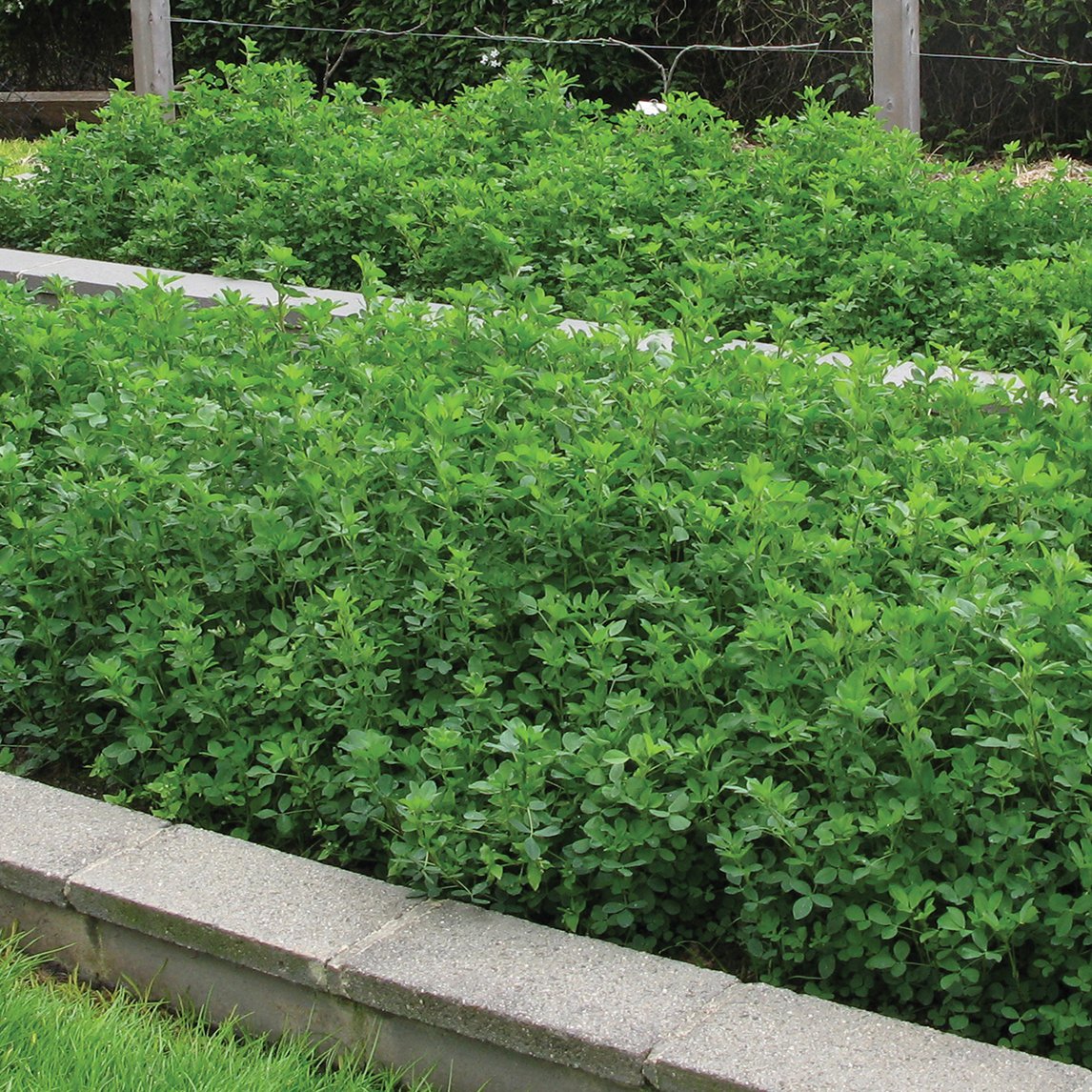
Avoid leaving your garden beds bare - sow a green manure or cover crop to improve soil structure and naturally improve the overall health of your garden. Ideal as part of your crop rotation plan, green manure crops are easy to sow and grow during the cooler months, which is the ideal preparation for spring and summer crops.
The importance of caring for your soil
The health and composition of your soil is critical to the success of your garden and the health of your plants. Much of what we do, as gardeners and farmers, can improve or destroy the structure and health of our soils.
Poor or neglected soils are generally the root cause of most plant problems. Gardeners who neglect what happens beneath the surface of the soil are invariably disappointed with the overall health of their garden, as well as the performance of their plants.
The soil is the living network which supports plant growth. Water, nutrients and oxygen are all part of the soil web matrix, and one of the easiest ways to improve the organic content of any soil is to grow a green manure crop which is dug back into the soil before flowering.
Why plant a green manure or cover crop?
Green manures not only increase the organic content of the soil, they also add valuable nutrients such as nitrogen and phosphorus. They can also provide an organic mulch that suppresses weeds and improves the soil’s ability to hold water.
Growing a green manure crop is fundamentally about caring for your soil, but the added benefits are healthy plants which means fewer pests and diseases. Easy to incorporate in your crop rotation plan, this simple and natural garden technique can significantly increase your productivity without having to add artificial stimulants to your soils.
What’s the difference between a green manure crop or cover crop?
The good news is – these are essentially the same thing. The term cover crop generally used in farming and broad acre horticulture. Green manure is a term more commonly used in home gardens.
Many of the same plants are used in both applications including mung beans, clover, barley, oats, field peas, mustard, fenugreek, lucerne, buckwheat and vetch. Aside from our wide selection of green manures, we also have a curated cover crop mix which we used in our own trial gardens.
The top 5 key benefits of green manure crops are:
- Addition of organic matter to the soil, which supports microorganisms and worm activity as well as improving water holding capacity. Additional nutrients include nitrogen, phosphorous and carbon.
- Helping to stabilise the soil and prevent leaching of existing nutrients during heavy rains.
- Protecting the soil by covering the bare earth and shading it from harsh baking sun that could otherwise kill off existing soil micro-organisms.
- Improving soil structure through root penetration which also increases available oxygen.
- A natural weed suppressant, smothering weeds and providing competition against opportunistic weed growth.
How a green manure improves the soil: The science
- Plants absorb carbon from the air during growth and use it to build their roots, stems and leaves.
- Deep rooted plants also take up nutrients from deep in the soil profile, making them available to shallow rooted plants.
- Bio Mustard is a mixture of mustards with high isothiocyanates, a suppressor of fungal growth and destructive nematodes once dug in.
- Legumes, like peas and beans, fix nitrogen by working with soil bacteria to convert nitrogen from the air and store it in the soil.
How to grow and use green manures
Select a bed or range of gardens beds which you would like to prepare for sowing or growing in several months time. It could be a new garden bed, or part of your crop rotation.
1. Sow and grow

- Prepare a weed-free bed.
- If your green manure mix comes with inoculant, you can either lightly dampen the seeds before sprinkling with inoculant and make sure the seed is thoroughly coated and sown within 24 hours, or, the inoculant can be applied after sowing by diluting in water at the prescribed rate and watered in using a watering can.
- Sow the seeds just under the soil surface, lightly raking soil back over the seeds, and water in well.
- Water regularly once germination starts, as you would any other crop. Most green manure mixes include a range of fast-germinating seeds to out compete weeds during establishment.
2. Cut back

- Cut green manure back before flowering. This is usually done at 8-10 weeks, although it can occur at any stage.
- The top growth can be used as mulch, added to your compost or incorporated into the soil.
- Green manures are typically dug into the soil in order to sequester the stored nutrients.
3. Dig in

- Dig into the soil and leave at least 4-6 weeks prior to planting to allow the green manure to decompose prior to planting.
- Green manures can be dug in at any stage of growth up to the flowering stage (avoid allowing plants to set seed).
- Your soil is now enriched, invigorated and ready to plant.
How can I incorporate a green manure crop in my crop rotation?
In smaller gardens, where summer crops are usually dominant, green manures are normally planted in the autumn and grow through winter, so they can be ‘turned in’ to make the accumulated nutrients available for the following spring or summer season.
Where space can be spared in the summer, a different suite of green manure crops can be grown over the warmer months. So, with some planning, you can grow your own soil improving green manures year round (see table below).
What is a biofumigant plant?
Biomustards are selected blends of non-edible Brassicaceous plants with the highest levels of biofumigant compounds known as ‘isothiocynates’. They are useful for adding organic matter to the soil, help control fungal soil borne diseases such as tomato wilt and are effective in the control of nematodes. Calendula officinalis and Tagetes patula are good for nematode control and can be used as a green manure.
For best results seed should be sown in the autumn and allowed to mature to near flowering. Plants should then be slashed and incorporated into the soil as soon as possible to a depth of at least 30 centimetres.
How do I sow my green manure seed?
Decide which beds you wish to cover. Ideally you should cover all beds, trialling a few types of green manures so that you find the one or combinations that best suit your soil types. Generally available as warm season and cool season green manure crops, use as part f your vegetable garden crop rotation.
Prepare a weed free bed. Broadcast the green manure seed over the bed and rake to cover. Winter crops, such as Diggers Autumn Green Manure Mix should be sown in early to mid-autumn, summer crops in early spring to mid-spring.
When to dig in your cover crop
Whether you are growing summer or winter crops, legumes or carbon rich grains, the timing of when you cut and dig them in is important.
Plants accumulate nutrients to maximise their species’ survival by making these nutrients available to their next generation via their seeds. So, in order for us to reap the benefits, we need to intervene at just the right moment.
Before a legume flowers, 50% of the fixed nitrogen is available for the next crop if tilled in, but if the plant is allowed to set seed, as little as 5% will be available as this nitrogen is destined for the seeds. The same applies to the carbon rich grains that will draw their stored nutrients into their seeds.
This means that the best time to turn in your green manure is at, or just before, flowering.
If you have a mixture of varieties in your green manure mix you will have to make a judgement when to turn the whole lot in, usually this is when the earliest flowering variety is in bloom.
Factors that affect the breakdown of green manure are temperature, moisture, pH and oxygen.
If turning your green manure into warm soil, allow 3-4 weeks for the soil micro-organisms to break down these plant tissues (it is important to wait this time because pathogens like fresh matter), if you are turning it in the cooler months this may take a week or two longer as the micro-organisms are less active in cooler conditions.
Once the material has broken down, then you can plant out seedlings or direct sow into the rejuvenated bed.







